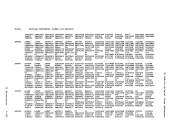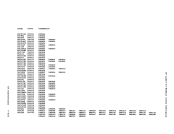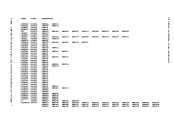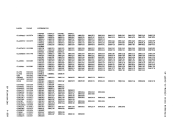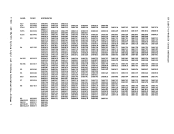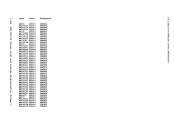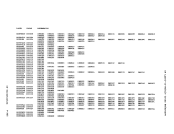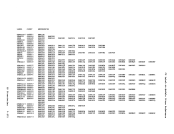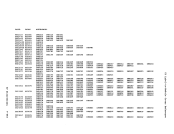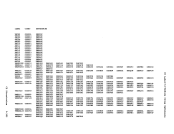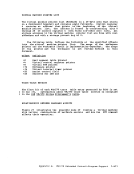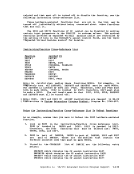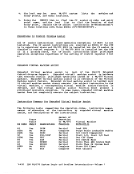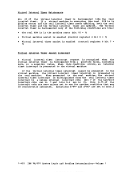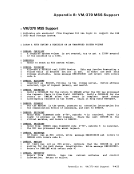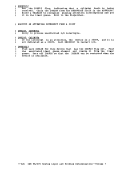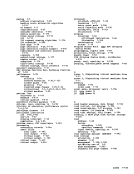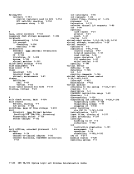ECC checks the validity of data fro. real and control storage,
automatically correcting single-bit errors. It also detectsmultiple-bit errors but does not correct them. Data enters and leaves storage through
a storage adapter unit. This unit checks each doubleword for correct
parity in each byte. If a single-bit error is detected, it is corrected.
The corrected doubleword is then sent back into real or control storage
and on to the processor.When a multiple-bit error is detected, a
machine check interruption occurs, and the error location is placed in
the fixed logout area.MCH gains control and attempts to recover from the error.
Two control registers are used byMCH for loading and storing control
information (see Figure 21). Control register 14 containsmask bits
which specify whether certain conditions can cause aachine check
interruptions and mask bits which control conditions under which an
extended logout can occur. Control register 15 contains the address of
the extended logout area.Iii , I I I I IWordlBitsl Name of Field I Associated with .~~-------------------------------------~I~---------------~ 14 1 0 1 Check-stop control ftch-Chk handling
141 1 1 Synchronous MCEL control ftch-Chk handling
141 2 I I/O extended logout control Chan-Chk handling
14I 4 1 Recovery report mask ftch-Chk handling
14I 5 I Degradation report mask ftch-Chk handling
141 6 I External damage report mask ftch-Chk handling
141 7 I Warning mask ftch-Chk handling
14I 8 I Asynchronous MCEL control ftch-Chk handling
14I 9 1 Asynchronous fixed log control ftch-Chk handling
1518-281 MCEL address ftch-Chk handling
Figure 21.RMS Control Register Assignments VM/370 Machine Check Handler module (DftKftCH) consists of the following
functions:• Initial analysis subroutine • Main storage analysis subroutine • SPF analysis subroutine • Recovery facility mode switching • Operator communication subroutine • Virtual user termination subroutine • Soft recording subroutine • Buffer error subroutine • Termination subroutine
1-152IBM VM/370 System Logic and Problem Deterlination--Voluae 1
automatically correcting single-bit errors. It also detects
a storage adapter unit. This unit checks each doubleword for correct
parity in each byte. If a single-bit error is detected, it is corrected.
The corrected doubleword is then sent back into real or control storage
and on to the processor.
machine check interruption occurs, and the error location is placed in
the fixed logout area.
Two control registers are used by
information (see Figure 21). Control register 14 contains
which specify whether certain conditions can cause aachine check
interruptions and mask bits which control conditions under which an
extended logout can occur. Control register 15 contains the address of
the extended logout area.
14
14
14
14
14
14
14
14
15
Figure 21.
functions:
1-152






















































































































































































































































































































